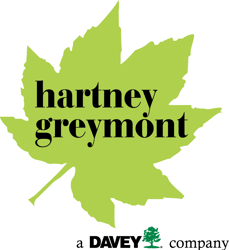Make note of anything that appears to be delayed in pushing out leaves or displays strange coloring. As a general rule throughout the growing season, yellow, orange, brown, or black plant parts (barring those characteristics of the species) are typically a cause for concern. The most commonly seen issue coming out of winter is desiccation.
Desiccation refers to damage of plant cells caused by either a loss of moisture, or freezing temperatures (frostbite), resulting in the death of a plant part, or the whole plant entirely. It can affect the leaves, buds, or branches, which may also create the opportunity for secondary pathogens to move in and cause death themselves. This is brought about by exposure to heat or high winds, a quick/dramatic fluctuation in temperature, or prolonged frigid temperatures, and is most commonly witnessed in broadleaf evergreens such as laurels, azaleas, rhododendron, and hollies.
Plants to watch are those in exposed locations (windy corners, open landscapes, bordering bodies of water), those close to hardscapes where reflected heat could pose a threat (driveways, roads, patios, chimneys, brick/stone houses), or anything next to a traveled roadway where salt spray could reach.
Preventative measures can be taken in the form of anti-desiccant applications early in the winter, or physically wrapping vulnerable plants in burlap.



